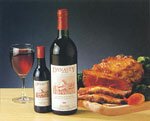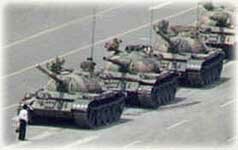While China didn’t make it into this year’s World Cup, there is interest in the tournament and will be ample opportunity to catch the games.
Andrea has an English-language lineup of the scheduled matches to be aired on CCTV 1, 2, and 5 (all with Chinese-language commentary). Virtual China offers a link to sites that will webcast the event.:
There will clearly be a demand during that 24 delay, and it will clearly be met.
Sohu.com and SMGBB.cn, a subsidiary of Shanghai Media Group, have partnered to provide the online 2006 FIFA World Cup for tens of millions of Chinese viewers, if not more. Sohu is also the exclusive online media provider of the Beijing 2008 Olympics (talk about a good place to be), and the 2006 World Cup can be seen as an early dry-run.
And for those in Shanghai, the Shanghaiist notes where you can catch events on a really big screen.:
The Shanghai Film Art Center will be showing some World Cup matches on a 40-square-meter screen, the Shanghai Daily reports. Matches shown will be:
- England vs. Paraguay, June 10, 9 pm
- All quarterfinal matches, June 30, July 1 and July 2, 11 pm and 3 am
- Both semifinal matches, July 5 and July 6, 3 am
- The championship match, July 10, 2 am
- They will be using a digital projector to show CCTV-5’s feed. The theater holds 288 people and 125 tickets (50 yuan each) have already been sold for the England/Paraguay match.
Schedules are subject to revision or hijacking by ‘evil cults.’:
Television signals illegally broadcast by the Falun Gong cult cut into transmissions using the Sino Satellite (SINOSAT) from June 23 to 30, blocking the World Cup finals for viewers in some rural and remote areas in China.
The Radio Administration of the Ministry of Information Industry said on July 8 that the hijacking of nine China Central Television Station (CCTV) channels and 10 provincial TV channels was committed by the overseas cult organization of Falun Gong, manipulated by its ringleader Li Hongzhi.
The hijack severely interfered with the normal broadcast of China’s TV programs and operations of China’s satellite, which violated the basic rules of civil telecommunications and international conventions, jeopardized China’s national security and violated the rights and interests of the public.
The hijack mainly affected television users in rural and remote areas covered by the government scheme of “TV signals to every village.” They were viewing celebrations for the fifth anniversary of Hong Kong’s return to China, the World Cup finals and other major domestic and international news when the illegal signals occurred.
Technorati Tags: asia, china, east asia, northeast asia, world cup
 BEIJING, June 5 — Dark soya sauce, widely used in East Asia, may prove to be more effective than red wine and vitamin C in combating human cell damage, researchers in Singapore said.
BEIJING, June 5 — Dark soya sauce, widely used in East Asia, may prove to be more effective than red wine and vitamin C in combating human cell damage, researchers in Singapore said.
 The “Unknown Rebel” who famously stood up to a column of tanks during the pro-democracy demonstrations in Tiananmen Square in 1989 is rumored to be living in Taiwan where he reportedly settled in 1993.The “tank man” Wang Weilin has been an adviser on ceramic artifacts and antiques to Taiwan’s National Palace Museum, the Epoch Times quoted a Hong Kong-based professor who spoke on condition of anonymity as saying.
The “Unknown Rebel” who famously stood up to a column of tanks during the pro-democracy demonstrations in Tiananmen Square in 1989 is rumored to be living in Taiwan where he reportedly settled in 1993.The “tank man” Wang Weilin has been an adviser on ceramic artifacts and antiques to Taiwan’s National Palace Museum, the Epoch Times quoted a Hong Kong-based professor who spoke on condition of anonymity as saying.

































